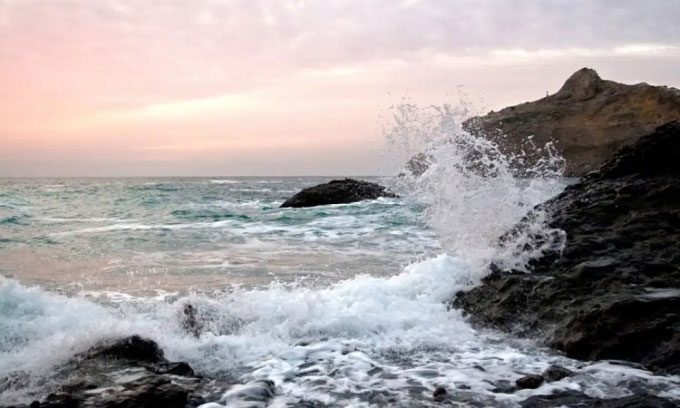Researchers have designed a pendulum system that can easily absorb waves and reduce the risk of coastal erosion in the near future.

The pendulum system can protect coastlines from strong wave impacts. (Image: New Scientist).
Coastal erosion occurs when coastal land is impacted by waves or ocean currents. This issue is becoming increasingly severe due to climate change. In response, researchers have proposed a new solution involving the installation of underwater pendulums. Named MetaReef, the project is led by a team of experts from the National Research Council of Italy’s Institute of Marine Sciences. The project includes the installation of a network of pendulums anchored to the seabed. When ocean waves pass over the pendulums, each device begins to oscillate, absorbing wave energy and mitigating violent movement. The pendulums are made from materials less dense than water, as reported by Interesting Engineering on April 11.
Researchers emphasize that this system can easily absorb waves, reducing the risk of coastal erosion in the near future. The solution is designed to protect ecologically valuable coastal areas or tourist attractions. Additionally, the devices are low-cost and have minimal impact on the environment or water cycles.
According to Popular Science, the project is still in the initial design phase in the laboratory, but preliminary results are very promising. In the laboratory, the research team installed 11 pendulums made from half-meter-long plastic cylinders, submerged in a 50-meter-long tank. The results indicate that the devices can reduce wave amplitude by 80%. The aim of MetaReef is to explore the idea of wave control using metamaterials and to determine how much the system can weaken waves at the water’s surface.
Researchers are confident that the devices can be customized for larger applications. They will continue experiments to develop more sophisticated tools that can be used to protect threatened coastal areas and structures such as offshore oil rigs. According to reports, the research team will present their findings at the International Workshop on Waves and Floating Structures in Giardini Naxos, Italy, in early May.


















































